Neon blue-eye: Everything You Need to Know!

The Neon blue-eye, scientifically known as Pseudomugil cyanodorsalis, is a captivating and vibrant species that has become a prized gem in the world of aquarium enthusiasts. These freshwater fish are native to the pristine waters of Northern Australia, and their stunning blue eyes make them a distinctive and sought-after addition to aquariums around the globe.
As you embark on the journey of understanding and caring for these aquatic wonders, it’s essential to appreciate their unique characteristics and the role they play in the aquarium hobby. Beyond their aesthetic appeal, Neon blue-eye contribute to the dynamic tapestry of the aquarium community, bringing joy and fascination to both seasoned hobbyists and newcomers alike. Join us in exploring the mesmerizing world of Neon blue-eye, uncovering their secrets, and discovering why they hold a special place in the hearts of aquarium enthusiasts.
Characteristics of Neon blue-eye
Physical Appearance and Distinctive Features
- Vibrant Hues: Neon blue-eye boast a stunning array of colors, including iridescent blues, yellows, and hints of green, creating a visual spectacle in any aquarium.
- Blue Eyes: As the name suggests, their most striking feature is their captivating blue eyes, adding an enchanting and unique element to their overall appearance.
- Elongated Fins: The fish exhibit gracefully elongated dorsal and anal fins, contributing to their elegant and streamlined profile.
Natural Habitat and Geographical Distribution
- Australian Waters: Originating from the clear waters of Northern Australia, Neon blue-eye are typically found in freshwater habitats, including streams, rivers, and ponds.
- Tropical Climate: Thriving in tropical climates, these fish are accustomed to warmer temperatures and can be found in various regions of Australia, showcasing adaptability to diverse environments.
- Vegetation and Shelters: In their natural habitat, Neon blue-eye prefer areas with abundant aquatic vegetation and submerged structures, providing them with shelter and breeding sites.
Unique Behaviors and Interactions with Other Fish
- Schooling Tendencies: Neon blue-eye are known for their social nature, often forming schools in the wild and displaying a sense of camaraderie in aquarium settings.
- Peaceful Demeanor: Despite their vibrant appearance, these fish maintain a peaceful disposition, making them compatible with a variety of tank mates.
- Courtship Rituals: During breeding seasons, Neon blue-eye engage in intricate courtship rituals, displaying impressive color changes and fin movements as part of their fascinating mating behavior.
Exploring the physical allure, natural habitat, and social dynamics of Neon blue-eye provides valuable insights for both seasoned aquarists and those venturing into the world of aquarium keeping. Understanding these characteristics enhances the overall appreciation for these captivating creatures in the aquatic realm.
Setting Up the Ideal Aquarium
Tank Size and Water Parameters for Neon blue-eye
- Adequate Space: Neon blue-eye thrive in spacious environments, so opt for a tank size of at least 20 gallons to accommodate their active nature and schooling tendencies.
- Temperature Range: Maintain a tropical temperature range of 75-82°F (24-28°C) to replicate their natural habitat conditions and promote their overall well-being.
- pH and Hardness: Aim for a slightly acidic to neutral pH (6.5-7.5) and moderate hardness levels (5-15 dGH), providing a comfortable setting for these vibrant fish.
Suitable Tank Mates and Potential Compatibility Issues
- Peaceful Companions: Neon blue-eye are known for their peaceful demeanor, making them suitable tank mates for other non-aggressive species such as tetras, rasboras, and corydoras.
- Avoid Aggressive Species: Steer clear of aggressive or territorial fish, as Neon blue-eye may become stressed in confrontational environments.
- Schooling Behavior: Consider keeping them in groups of five or more to encourage their natural schooling behavior, promoting a sense of security and reducing stress.
Decorations and Plants to Mimic Their Natural Habitat
- Aquatic Plants: Integrate live or artificial aquatic plants such as Java Moss or Vallisneria to provide hiding spots and mimic the vegetation-rich habitats of Neon blue-eye.
- Submerged Structures: Include driftwood, rocks, and caves to create hiding places and mimic the submerged structures found in their native Australian waters.
- Low-Moderate Flow: Maintain a gentle to moderate water flow to simulate the conditions of their natural streams while ensuring they have ample swimming space.
Creating an aquarium environment tailored to the specific needs of Neon blue-eye not only enhances their well-being but also allows for a visually stunning and harmonious aquatic display. By focusing on these key elements, aquarists can cultivate an ideal setting that mirrors the beauty of these captivating fish in their natural habitat.
Feeding and Nutrition
Dietary Preferences of Neon blue-eye
- Omnivorous Diet: Neon blue-eye are omnivores, requiring a balanced diet that includes both animal and plant-based food.
- Live and Prepared Foods: Incorporate a variety of live and prepared foods such as high-quality flakes, pellets, freeze-dried brine shrimp, and daphnia to ensure a diverse nutritional intake.
- Supplemental Feeding: Offer occasional treats like bloodworms or small insects to mimic their natural foraging behavior and provide essential nutrients.
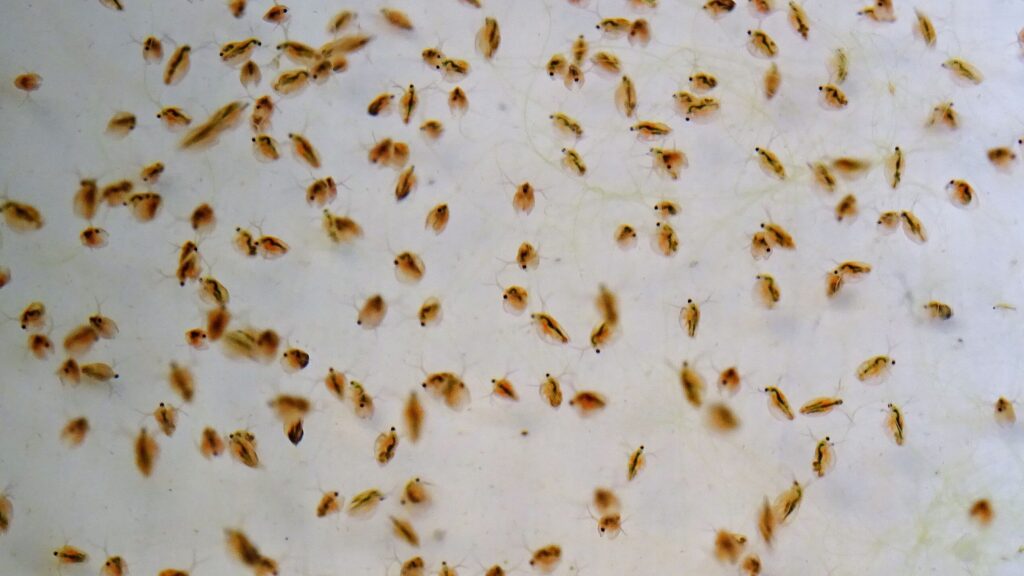
Recommended Types of Food and Feeding Frequency
- High-Quality Flakes and Pellets: Choose high-quality flake or pellet food specifically formulated for tropical freshwater fish, ensuring it meets the nutritional requirements of Neon blue-eye.
- Small, Frequent Meals: Feed small portions multiple times a day rather than one large meal to accommodate their active nature and encourage optimal digestion.
- Variety in Feeding: Rotate between different types of food to provide a well-rounded diet and prevent nutritional deficiencies.
Tips for Maintaining a Balanced and Nutritious Diet
- Monitor Eating Habits: Pay attention to the feeding behavior of Neon blue-eye, adjusting the quantity and frequency based on their appetite and overall health.
- Avoid Overfeeding: Overfeeding can lead to water quality issues and health problems. Feed only what the fish can consume in a few minutes, removing any uneaten food promptly.
- Supplement with Vegetables: Introduce vegetable-based foods like spirulina flakes or blanched vegetables to cater to their omnivorous nature and promote overall well-being.
Ensuring a well-balanced diet is crucial for the health and vibrancy of Neon blue-eye. By understanding their dietary preferences and implementing proper feeding practices, aquarists can foster optimal growth, vibrant colors, and longevity in these captivating aquatic companions.
Breeding Neon blue-eye
Conditions for Successful Breeding
- Optimal Water Parameters: Maintain stable and pristine water conditions with a temperature between 78-82°F (25-28°C), a slightly acidic to neutral pH (6.5-7.5), and soft to moderately hard water (5-15 dGH).
- Separate Breeding Tank: Create a separate breeding tank with fine-leaved plants, spawning mops, or mesh for egg deposition, providing a conducive environment for the breeding pair.
- Diminished Lighting: Reduce the lighting intensity to mimic the subdued conditions preferred by Neon blue-eye during the breeding process.
Key Behaviors Indicating Breeding Readiness
- Intensified Coloration: Both male and female Neon blue-eye exhibit heightened coloration, with males showcasing more vibrant hues to attract potential mates.
- Energetic Chasing: Males engage in energetic chasing of females, displaying courtship behaviors such as fin flaring and zigzag swimming.
- Egg Depositing Rituals: The female scatters adhesive eggs among plants or spawning mops, while the male fertilizes them. Observing this process indicates successful breeding behavior.

Caring for Fry and Ensuring a Healthy Breeding Environment
- Separate Fry Tank: Transfer the eggs or fry to a separate tank to protect them from potential predation by adult fish.
- Infusoria and Small Foods: Initially, feed the fry with infusoria or specialized fry food until they are large enough to consume micro worms or newly hatched brine shrimp.
- Gradual Tank Integration: Once the fry grow larger, gradually reintroduce them to the main tank, monitoring their interactions and ensuring they can fend for themselves.
Breeding Neon blue-eye can be a rewarding experience for dedicated aquarists. By creating the right conditions, recognizing key behaviors, and providing proper care for the fry, enthusiasts can witness the fascinating life cycle of these captivating fish and contribute to the sustainability of their population in the aquarium setting.
Common Health Issues and Care Tips
Overview of Potential Health Concerns
- Fungal Infections: Neon blue-eye may be susceptible to fungal infections, often characterized by white or fuzzy growth on their bodies or fins.
- Parasitic Infestations: External parasites like Ich or internal parasites can affect these fish, leading to symptoms such as lethargy, flashing, or changes in appetite.
- Stress-Related Issues: Environmental stressors, aggression, or poor water quality can contribute to various health issues, compromising the overall well-being of Neon blue-eye.
Prevention Strategies and Proactive Care
- Maintain Excellent Water Quality: Regular water testing and consistent water changes are essential to prevent stress and mitigate the risk of infections.
- Quarantine New Additions: Quarantine any new fish before introducing them to the main tank to prevent the spread of potential diseases.
- Provide a Balanced Diet: A nutritious and varied diet boosts the fish’s immune system, reducing susceptibility to infections and promoting overall health.
Recommended Treatments for Common Ailments
- Anti-Fungal Medications: In case of fungal infections, use reputable anti-fungal medications as per the manufacturer’s instructions, and consider increasing water temperature slightly to expedite the healing process.
- Anti-Parasitic Treatments: For parasitic infestations, medications containing ingredients like copper or formalin can be effective. Follow dosage recommendations carefully and monitor fish closely during treatment.
- Stress Reduction Measures: If stress-related issues arise, identify and eliminate stressors, provide ample hiding spaces, and ensure the aquarium environment is free from disturbances.
Understanding and addressing common health issues promptly is crucial for maintaining the well-being of Neon blue-eye. By implementing preventative measures and utilizing appropriate treatments when necessary, aquarists can ensure a thriving and resilient community of these vibrant fish in their aquarium.
Conservation Status
Brief Overview on the Conservation Status
- Vulnerable Status: The Neon blue-eye, Pseudomugil cyanodorsalis, is categorized as “Vulnerable” on the IUCN Red List, signifying a heightened risk of endangerment in the wild.
- Habitat Threats: Habitat destruction, water pollution, and alterations in water flow due to human activities pose significant threats to the natural populations of Neon blue-eye in their native Australian waters.
- Conservation Efforts: Conservation initiatives and habitat restoration projects are crucial to preserving the species and maintaining the delicate ecological balance of their natural habitats.
Importance of Responsible Aquarium Keeping
- Preserving Genetic Diversity: Responsible aquarium keeping involves supporting ethical practices such as avoiding wild-caught specimens and promoting captive breeding programs. This helps preserve the genetic diversity of Neon blue-eye and reduces pressure on wild populations.
- Educational Outreach: By fostering awareness about the conservation status of Neon blue-eye and their native habitats, aquarists play a pivotal role in educating the public and encouraging sustainable practices within the aquarium hobby.
- Supporting Conservation Organizations: Supporting reputable conservation organizations and initiatives dedicated to the preservation of freshwater ecosystems contributes to broader efforts in safeguarding the habitats essential for the survival of Neon blue-eye and other vulnerable aquatic species.
Understanding the conservation status of Neon blue-eye emphasizes the importance of responsible aquarium practices. Through ethical sourcing, captive breeding programs, and active participation in conservation efforts, aquarium enthusiasts can contribute to the long-term viability of these captivating fish and their ecosystems.
Conclusion
Recap of Key Points
- From their captivating blue eyes to their vibrant colors, Neon blue-eye are a prized addition to the aquarium community, known for their unique characteristics and peaceful demeanor.
- Proper care, including suitable tank setups, balanced nutrition, and awareness of breeding behaviors, allows enthusiasts to witness the full beauty and natural behaviors of these fascinating fish.
- Acknowledging the conservation status of Neon blue-eye emphasizes the responsibility of aquarists to contribute to ethical sourcing and responsible aquarium keeping practices.
Encouragement for Readers to Share Their Experiences
We encourage fellow aquarists to share their experiences and insights with Neon blue-eye. Whether you’re a seasoned hobbyist or just starting, each encounter and observation contributes to the collective knowledge of the community.
Call-to-Action
We invite you to leave comments below, sharing your thoughts, questions, or personal anecdotes about Neon blue-eye. Your engagement not only enhances the conversation but also creates a valuable resource for enthusiasts seeking information on these captivating aquatic companions. Feel free to share this post with fellow hobbyists who may find it informative or inspiring.
As we continue to explore the world of Neon blue-eye together, let’s foster a community that appreciates, learns from, and contributes to the well-being and conservation of these remarkable aquatic species. Thank you for being a part of this journey with us.
Additional Resources
Links to Reputable Forums
- AquariumAdvice: Engage with a community of experienced aquarists on AquariumAdvice.com, where you can find discussions, advice, and firsthand experiences related to Neon blue-eye.
- FishForum: Explore FishForums.net for an extensive community of aquarium enthusiasts, where threads on Neon blue-eye care, breeding, and health can provide valuable insights.
Links to Quality Products
- Quality Fish Food: Opt for high-quality fish food from reputable brands such as Hikari, Omega One, or New Life Spectrum, ensuring a nutritious and well-balanced diet for your Neon blue-eye.
- Reliable Aquarium Equipment: Invest in reliable aquarium equipment from trusted manufacturers like Fluval, Eheim, or AquaClear to maintain optimal tank conditions for your fish.
Exploring these additional resources can provide valuable support and information as you care for your Neon blue-eye. Remember, a well-informed community is a key aspect of successful aquarium keeping.
Frequently Asked Questions (FAQs)
1. What are the ideal tank conditions for Neon blue-eye?
Neon blue-eye thrive in a spacious aquarium of at least 20 gallons with a tropical temperature range of 75-82°F (24-28°C). Maintain a slightly acidic to neutral pH (6.5-7.5) and moderate water hardness (5-15 dGH) for optimal health.
2. Are Neon blue-eye suitable for community tanks?
Yes, Neon blue-eye are known for their peaceful nature, making them suitable for community tanks. They get along well with non-aggressive tank mates such as tetras, rasboras, and corydoras.
3. What do Neon blue-eye eat, and how often should they be fed?
Neon blue-eye are omnivores, and their diet should include high-quality flakes, pellets, and occasional live or freeze-dried foods like brine shrimp. Feed small portions multiple times a day to accommodate their active nature.
4. How can I encourage breeding behavior in Neon blue-eye?
Create a separate breeding tank with fine-leaved plants or spawning mops. Maintain a temperature of 78-82°F (25-28°C) and observe intensified coloration and energetic chasing behaviors to indicate breeding readiness.
5. What are common health issues in Neon blue-eye, and how can they be treated?
Common health issues include fungal infections, parasitic infestations, and stress-related problems. Treatments may include anti-fungal medications, anti-parasitic treatments, and stress reduction measures such as maintaining excellent water quality and providing a balanced diet.

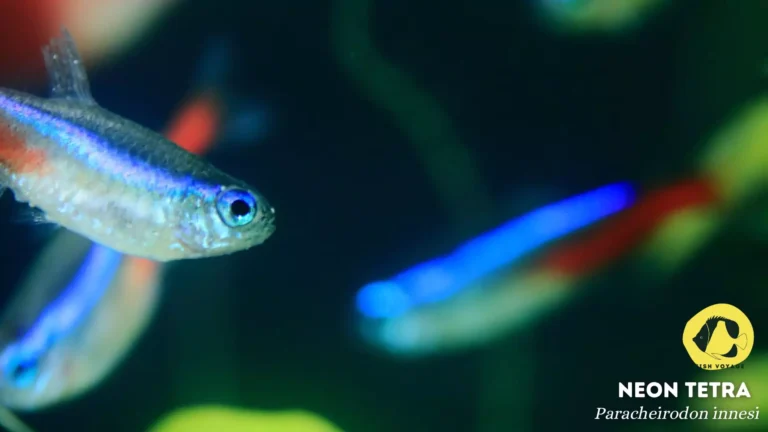

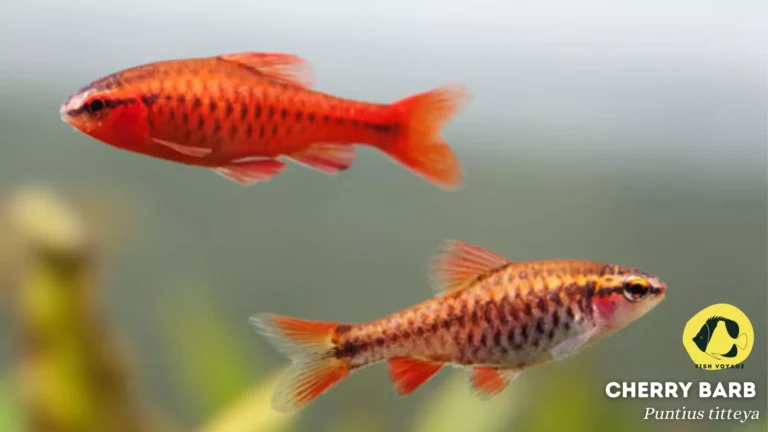
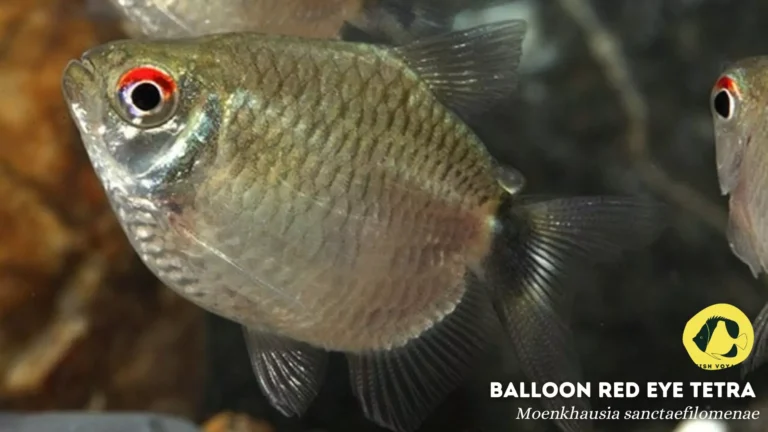
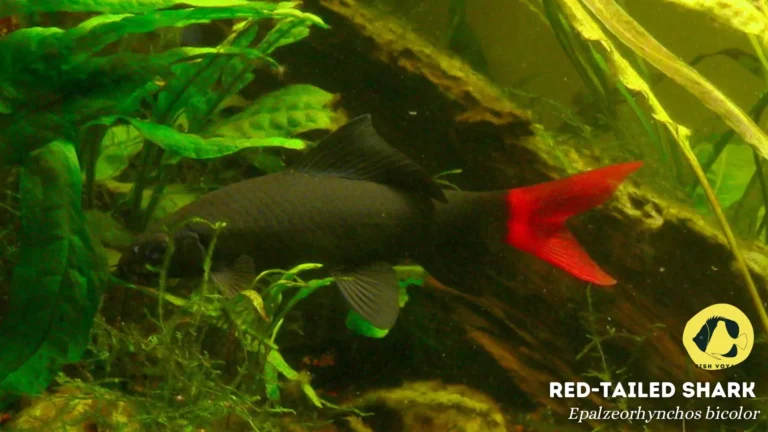
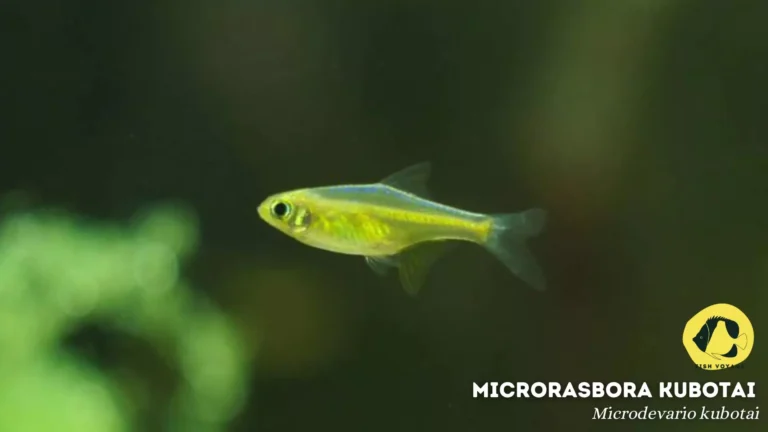
I’m really enjoying the design and layout of your site. It’s a very easy on the eyes which makes it much more enjoyable for me to come here and visit more often. Did you hire out a developer to create your theme? Great work!
Thank you so much for your kind words! We have worked on the theme for the website ourselves and are thrilled to hear you find the layout and content appealing. Stay tuned for more interesting posts!